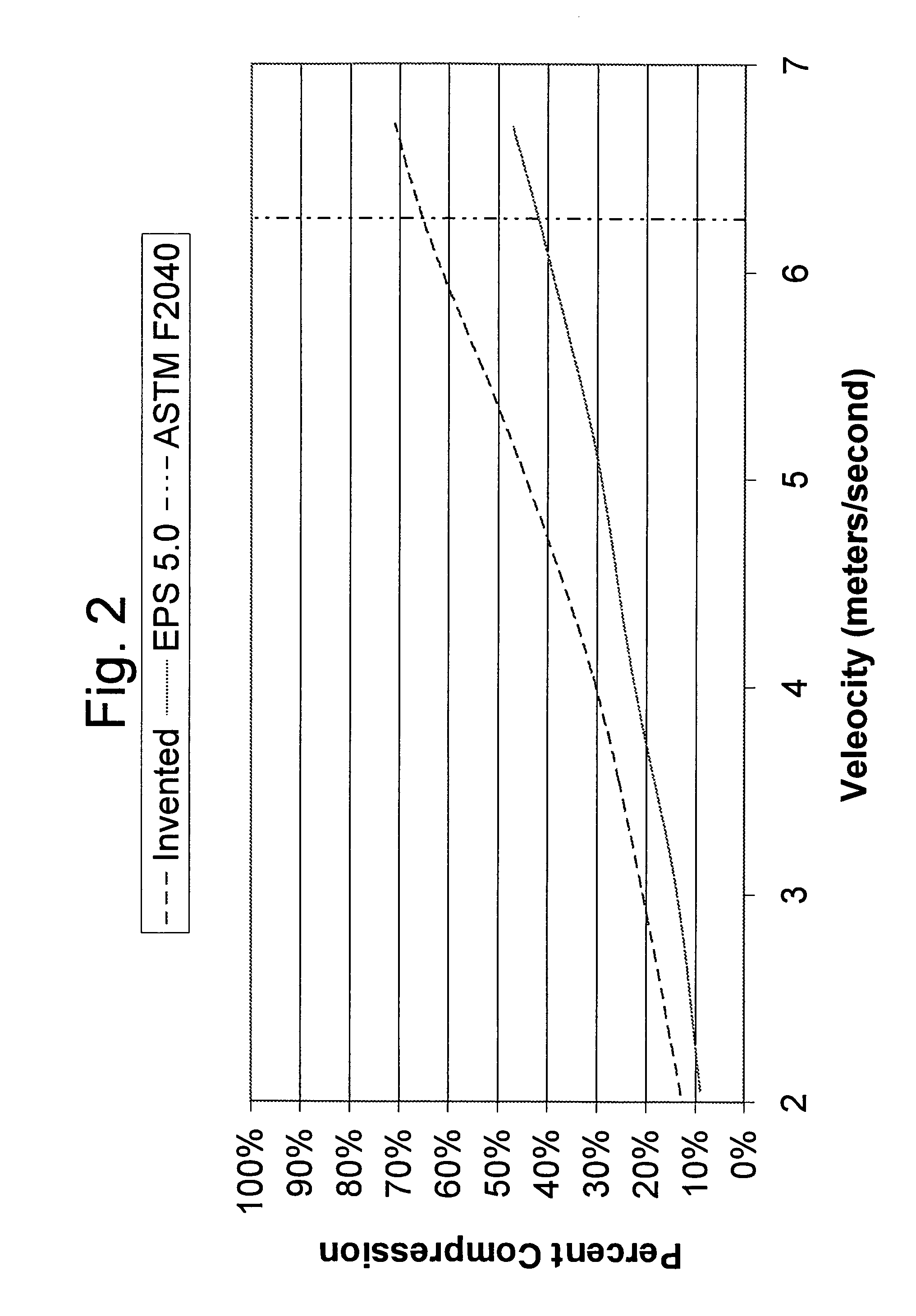Viscoelastic foam layer and composition
a technology of viscoelastic foam and composition, applied in the field of viscoelastic foam layer and composition, can solve the problems of not recovering or reversing to any significant degree, unable to effectively absorb the energy of higher velocity impacts compared to rigid foams like eps, and rigid urethane foams also correspondingly begin to suffer
- Summary
- Abstract
- Description
- Claims
- Application Information
AI Technical Summary
Benefits of technology
Problems solved by technology
Method used
Image
Examples
example 1
[0049]Eight foams were prepared from compositions according to the invention. Each of the eight foams was prepared by combining Part A and Part B compositions having the components in the amounts listed in Table 2 below for the respective foam.
[0050]
TABLE 2Part A and B compositions for eight foams prepared accordingto the inventionFoamElement12345678Part B [components listed in part by weight (pbw)]Monoethanolamine- / 49.59.51115149.5based polyolTriethanolamine-252110.510.5 / / 1110.5based polyolEthylenediamine-26263131403626 / Based polyolFilled polyol2424244924242416Unfilled polyol252525 / 25252564Black Paste66666666Water3333332.54Catalyst 111.251.51.51.150.850.90.35Catalyst 2 / / 0.05 / 0.10.1750.150.25Catalyst 310.25 / / / / / / Catalyst 40.50.5 / / / / / / Part AIsocyanate (wt. %)2323232323232323Foam Index11510799100999610095
[0051]In Table 2, the following listed elements represent the following components:[0052]The monoethanolamine-based polyol is a polyether polyol having an OH No. of about 700;[0053]Th...
example 2
[0066]In another experiment, a foam according to the invention was compared to EPS to test break-through acceleration and percent compression versus impact velocity according to ASTM F2040. In this experiment, the Foam No. 2 from Table 2 was used and compared to EPS. The test samples for each of the invented and EPS foams were square samples measuring 5.5″×5.5″×1″ thick. The tests were conducted first using a flat circular impactor having a 4-inch diameter, and then using a spherical impactor that also had a 4-inch diameter. The results are provided in FIGS. 1–2 and 3–4 for the flat and spherical impactors respectively. As can be seen from FIG. 1, using the flat impactor the invented foam exhibited significantly less breakthrough acceleration than EPS for impact velocities from 2 to about 6.5 m / s (i.e. resulting from unabsorbed energy which was transmitted through the foam); the invented foam exhibited about 50% less breakthrough acceleration measured in g's from 2 to about 6 m / s. A...
PUM
| Property | Measurement | Unit |
|---|---|---|
| weight percent | aaaaa | aaaaa |
| impact speeds | aaaaa | aaaaa |
| impact speeds | aaaaa | aaaaa |
Abstract
Description
Claims
Application Information
 Login to View More
Login to View More - R&D
- Intellectual Property
- Life Sciences
- Materials
- Tech Scout
- Unparalleled Data Quality
- Higher Quality Content
- 60% Fewer Hallucinations
Browse by: Latest US Patents, China's latest patents, Technical Efficacy Thesaurus, Application Domain, Technology Topic, Popular Technical Reports.
© 2025 PatSnap. All rights reserved.Legal|Privacy policy|Modern Slavery Act Transparency Statement|Sitemap|About US| Contact US: help@patsnap.com



